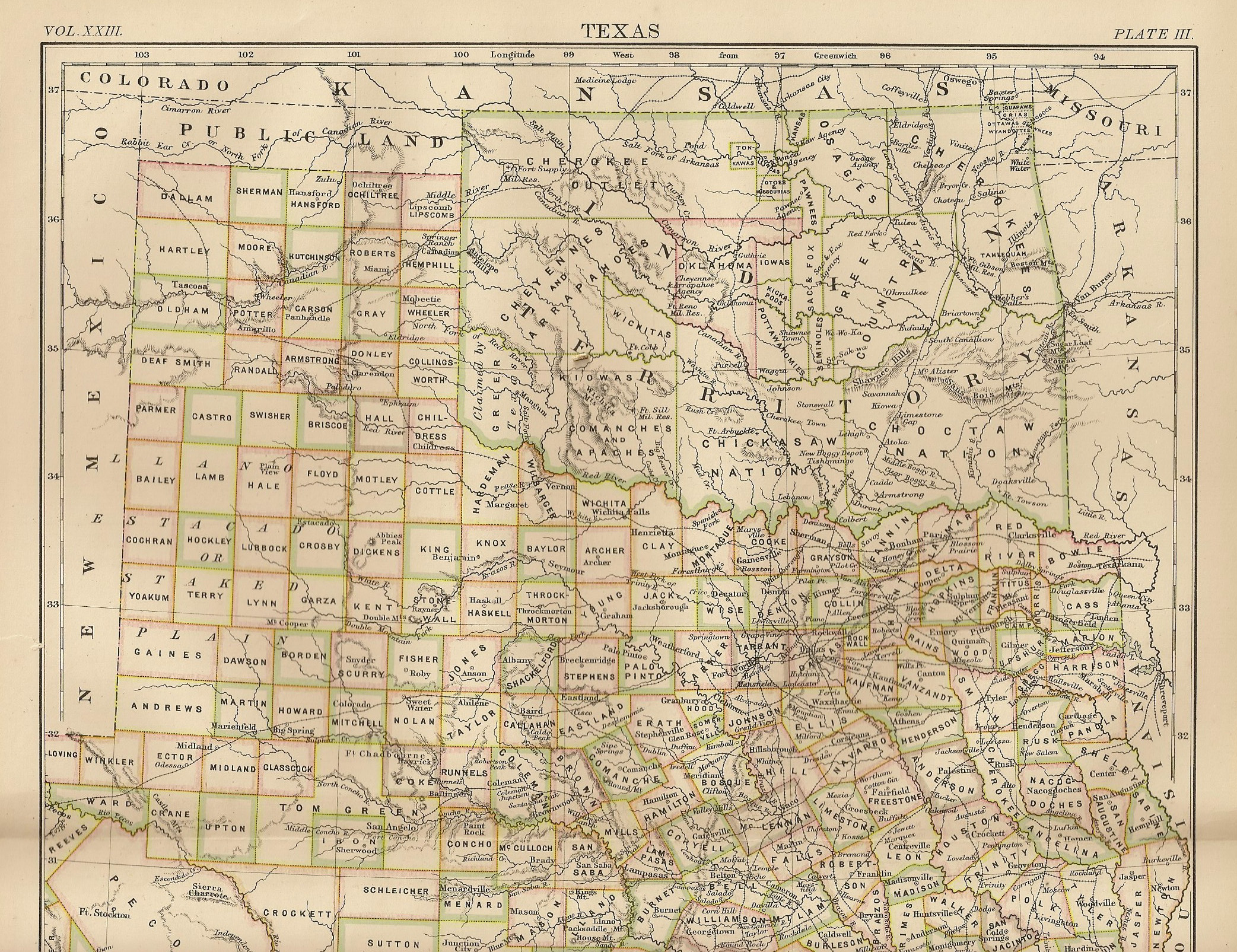|
KZIG
KZIG (107.5 FM broadcasting, FM, "The Rock") is a radio station city of license, licensed to serve the community of Wapanucka, Oklahoma. The station is owned by Keystone Broadcasting Corporation and airs a classic rock format. The station was assigned the KZIG call letters by the Federal Communications Commission on February 18, 2013 in radio, 2013. References External links Official WebsiteFCC Public Inspection File for KZIG * Radio stations in Oklahoma, ZIG Radio stations established in 2013 2013 establishments in Oklahoma Classic rock radio stations in the United States Johnston County, Oklahoma {{Oklahoma-radio-station-stub ... [...More Info...] [...Related Items...] OR: [Wikipedia] [Google] [Baidu] |
Radio Stations In Oklahoma
The following is a list of FCC-licensed radio stations in the U.S. state of Oklahoma, which can be sorted by their call signs, frequencies, cities of license, licensees, and programming formats. List of radio stations Defunct * KAMG-LP * KEIF-LP * KHVJ-LP * KIOP * KJZT-LP * KLGB-LP * KMAC * KNFB * KONZ * KPOP-LP * KPSU * KVWO-LP * KZPY-LP See also * Oklahoma media ** List of newspapers in Oklahoma ** List of television stations in Oklahoma ** Media of locales in Oklahoma: Broken Arrow, Lawton, Norman, Oklahoma City, Tulsa Tulsa () is the second-largest city in the state of Oklahoma and 47th-most populous city in the United States. The population was 413,066 as of the 2020 census. It is the principal municipality of the Tulsa Metropolitan Area, a region with ... References Bibliography * * * Gene Allen. Voices On the Wind: Early Radio in Oklahoma (Oklahoma City: Oklahoma Heritage Association, 1993). External links * * (Directory ceased in 2 ... [...More Info...] [...Related Items...] OR: [Wikipedia] [Google] [Baidu] |
Wapanucka, Oklahoma
Wapanucka (pronounced Wop´-uh-nuck´-uh) is a town in northeastern Johnston County, Oklahoma, United States. The population was 438 at the 2010 census, a 1.6 percent decrease from the figure of 445 in 2000. It is about northeast of Tishomingo. The town name refers to the Delaware Nation and means "Eastern Land People."Larry O'Dell, "Wapanucka", ''Encyclopedia of Oklahoma History and Culture''. Accessed July 12, 2015 History The Board of Foreign Missions of the Presbyterian Church built the Wapanucka Female Manual Labour School in 1851–2. The school, which opened in 1852, was named for a nearby creek. Local residents often called it Allen's Academy, for James S. Allen, who supervised it. Later many dubbed it Rock Academy fo ...[...More Info...] [...Related Items...] OR: [Wikipedia] [Google] [Baidu] |
Oklahoma
Oklahoma (; Choctaw language, Choctaw: ; chr, ᎣᎧᎳᎰᎹ, ''Okalahoma'' ) is a U.S. state, state in the South Central United States, South Central region of the United States, bordered by Texas on the south and west, Kansas on the north, Missouri on the northeast, Arkansas on the east, New Mexico on the west, and Colorado on the northwest. Partially in the western extreme of the Upland South, it is the List of U.S. states and territories by area, 20th-most extensive and the List of U.S. states and territories by population, 28th-most populous of the 50 United States. Its residents are known as Oklahomans and its capital and largest city is Oklahoma City. The state's name is derived from the Choctaw language, Choctaw words , 'people' and , which translates as 'red'. Oklahoma is also known informally by its List of U.S. state and territory nicknames, nickname, "Sooners, The Sooner State", in reference to the settlers who staked their claims on land before the official op ... [...More Info...] [...Related Items...] OR: [Wikipedia] [Google] [Baidu] |
Classic Rock
Classic rock is a US radio format which developed from the album-oriented rock (AOR) format in the early 1980s. In the United States, the classic rock format comprises rock music ranging generally from the mid-1960s through the mid 1990s, primarily focusing on commercially successful blues rock and hard rock popularized in the 1970s AOR format.Pareles, Jon (June 18, 1986)"Oldies on Rise in Album-Rock Radio" '' The New York Times''. Retrieved April 19, 2019. The radio format became increasingly popular with the baby boomer demographic by the end of the 1990s. Although classic rock has mostly appealed to adult listeners, music associated with this format received more exposure with younger listeners with the presence of the Internet and digital downloading. Some classic rock stations also play a limited number of current releases which are stylistically consistent with the station's sound, or by heritage acts which are still active and producing new music."New York Radio Guide ... [...More Info...] [...Related Items...] OR: [Wikipedia] [Google] [Baidu] |
Federal Communications Commission
The Federal Communications Commission (FCC) is an independent agency of the United States federal government that regulates communications by radio, television, wire, satellite, and cable across the United States. The FCC maintains jurisdiction over the areas of broadband access, fair competition, radio frequency use, media responsibility, public safety, and homeland security. The FCC was formed by the Communications Act of 1934 to replace the radio regulation functions of the Federal Radio Commission. The FCC took over wire communication regulation from the Interstate Commerce Commission. The FCC's mandated jurisdiction covers the 50 states, the District of Columbia, and the territories of the United States. The FCC also provides varied degrees of cooperation, oversight, and leadership for similar communications bodies in other countries of North America. The FCC is funded entirely by regulatory fees. It has an estimated fiscal-2022 budget of US $388 million. It h ... [...More Info...] [...Related Items...] OR: [Wikipedia] [Google] [Baidu] |
Watt
The watt (symbol: W) is the unit of power or radiant flux in the International System of Units (SI), equal to 1 joule per second or 1 kg⋅m2⋅s−3. It is used to quantify the rate of energy transfer. The watt is named after James Watt (1736–1819), an 18th-century Scottish inventor, mechanical engineer, and chemist who improved the Newcomen engine with his own steam engine in 1776. Watt's invention was fundamental for the Industrial Revolution. Overview When an object's velocity is held constant at one metre per second against a constant opposing force of one newton, the rate at which work is done is one watt. : \mathrm In terms of electromagnetism, one watt is the rate at which electrical work is performed when a current of one ampere (A) flows across an electrical potential difference of one volt (V), meaning the watt is equivalent to the volt-ampere (the latter unit, however, is used for a different quantity from the real power of an electrical circuit ... [...More Info...] [...Related Items...] OR: [Wikipedia] [Google] [Baidu] |
FM Broadcasting
FM broadcasting is a method of radio broadcasting using frequency modulation (FM). Invented in 1933 by American engineer Edwin Armstrong, wide-band FM is used worldwide to provide high fidelity sound over broadcast radio. FM broadcasting is capable of higher fidelity—that is, more accurate reproduction of the original program sound—than other broadcasting technologies, such as AM broadcasting. It is also less susceptible to common forms of interference, reducing static and popping sounds often heard on AM. Therefore, FM is used for most broadcasts of music or general audio (in the audio spectrum). FM radio stations use the very high frequency range of radio frequencies. Broadcast bands Throughout the world, the FM broadcast band falls within the VHF part of the radio spectrum. Usually 87.5 to 108.0 MHz is used, or some portion thereof, with few exceptions: * In the former Soviet republics, and some former Eastern Bloc countries, the older 65.8–74 M ... [...More Info...] [...Related Items...] OR: [Wikipedia] [Google] [Baidu] |
Radio Station
Radio broadcasting is transmission of audio (sound), sometimes with related metadata, by radio waves to radio receivers belonging to a public audience. In terrestrial radio broadcasting the radio waves are broadcast by a land-based radio station, while in satellite radio the radio waves are broadcast by a satellite in Earth orbit. To receive the content the listener must have a broadcast radio receiver (''radio''). Stations are often affiliated with a radio network which provides content in a common radio format, either in broadcast syndication or simulcast or both. Radio stations broadcast with several different types of modulation: AM radio stations transmit in AM ( amplitude modulation), FM radio stations transmit in FM (frequency modulation), which are older analog audio standards, while newer digital radio stations transmit in several digital audio standards: DAB (digital audio broadcasting), HD radio, DRM ( Digital Radio Mondiale). Television bro ... [...More Info...] [...Related Items...] OR: [Wikipedia] [Google] [Baidu] |
City Of License
In American, Canadian, and Mexican broadcasting, a city of license or community of license is the community that a radio station or television station is officially licensed to serve by that country's broadcast regulator. In North American broadcast law, the concept of ''community of license'' dates to the early days of AM radio broadcasting. The requirement that a broadcasting station operate a ''main studio'' within a prescribed distance of the community which the station is licensed to serve appears in U.S. law as early as 1939. Various specific obligations have been applied to broadcasters by governments to fulfill public policy objectives of broadcast localism, both in radio and later also in television, based on the legislative presumption that a broadcaster fills a similar role to that held by community newspaper publishers. United States In the United States, the Communications Act of 1934 requires that "the Commission shall make such distribution of licenses, fr ... [...More Info...] [...Related Items...] OR: [Wikipedia] [Google] [Baidu] |
Classic Rock
Classic rock is a US radio format which developed from the album-oriented rock (AOR) format in the early 1980s. In the United States, the classic rock format comprises rock music ranging generally from the mid-1960s through the mid 1990s, primarily focusing on commercially successful blues rock and hard rock popularized in the 1970s AOR format.Pareles, Jon (June 18, 1986)"Oldies on Rise in Album-Rock Radio" '' The New York Times''. Retrieved April 19, 2019. The radio format became increasingly popular with the baby boomer demographic by the end of the 1990s. Although classic rock has mostly appealed to adult listeners, music associated with this format received more exposure with younger listeners with the presence of the Internet and digital downloading. Some classic rock stations also play a limited number of current releases which are stylistically consistent with the station's sound, or by heritage acts which are still active and producing new music."New York Radio Guide ... [...More Info...] [...Related Items...] OR: [Wikipedia] [Google] [Baidu] |
2013 In Radio
The following is a list of events affecting radio broadcasting Radio broadcasting is transmission of audio (sound), sometimes with related metadata, by radio waves to radio receivers belonging to a public audience. In terrestrial radio broadcasting the radio waves are broadcast by a land-based radi ... in 2013. Events listed include radio program debuts, finales, cancellations, and station launches, closures and format changes, as well as information about controversies. Notable events January February March May June July September October December Débuts Endings Deaths References {{DEFAULTSORT:2013 In Radio ... [...More Info...] [...Related Items...] OR: [Wikipedia] [Google] [Baidu] |
Radio Stations Established In 2013
Radio is the technology of signaling and communicating using radio waves. Radio waves are electromagnetic waves of frequency between 30 hertz (Hz) and 300 gigahertz (GHz). They are generated by an electronic device called a transmitter connected to an antenna which radiates the waves, and received by another antenna connected to a radio receiver. Radio is very widely used in modern technology, in radio communication, radar, radio navigation, remote control, remote sensing, and other applications. In radio communication, used in radio and television broadcasting, cell phones, two-way radios, wireless networking, and satellite communication, among numerous other uses, radio waves are used to carry information across space from a transmitter to a receiver, by modulating the radio signal (impressing an information signal on the radio wave by varying some aspect of the wave) in the transmitter. In radar, used to locate and track objects like aircraft, ships, spacecraft and ... [...More Info...] [...Related Items...] OR: [Wikipedia] [Google] [Baidu] |





